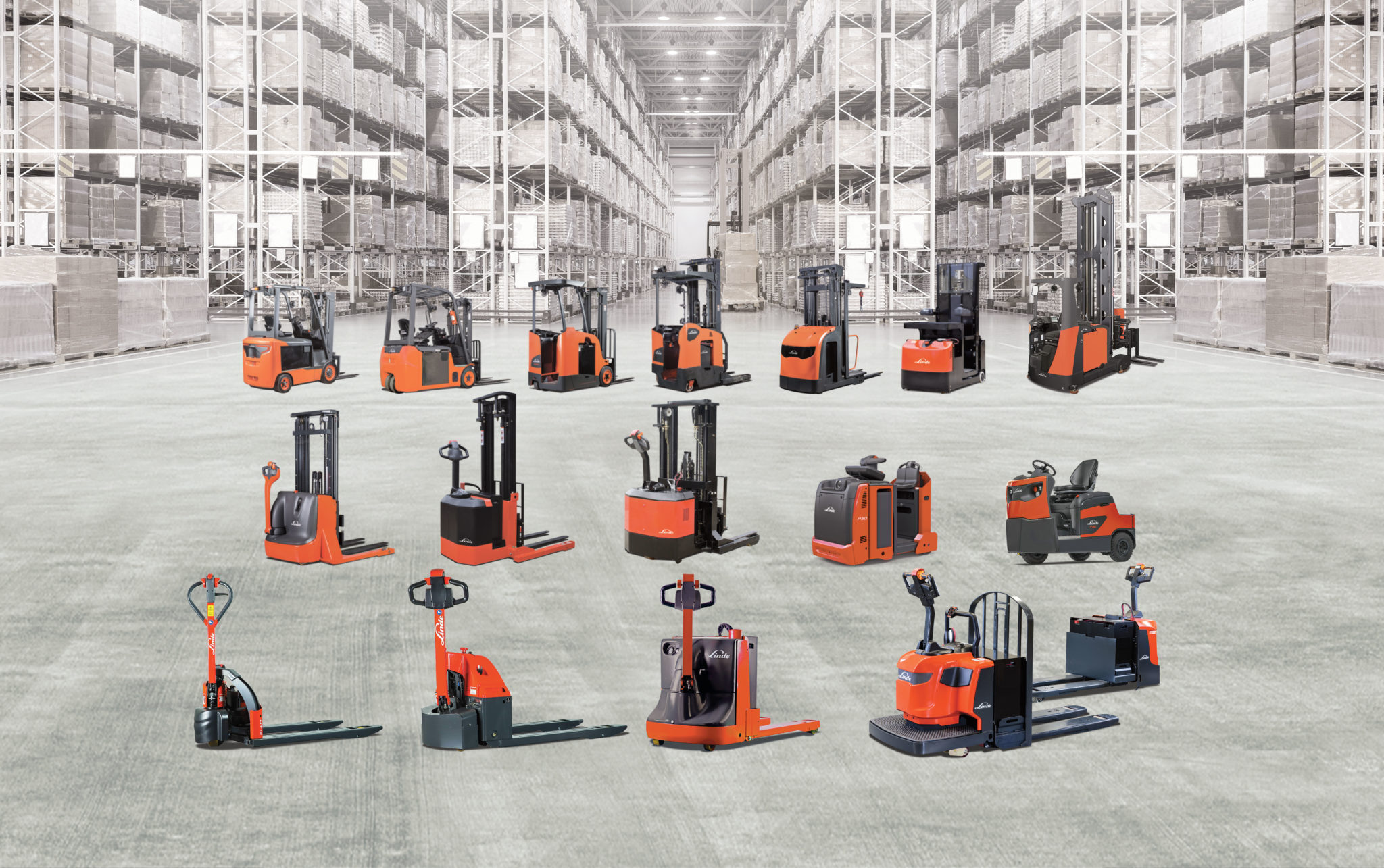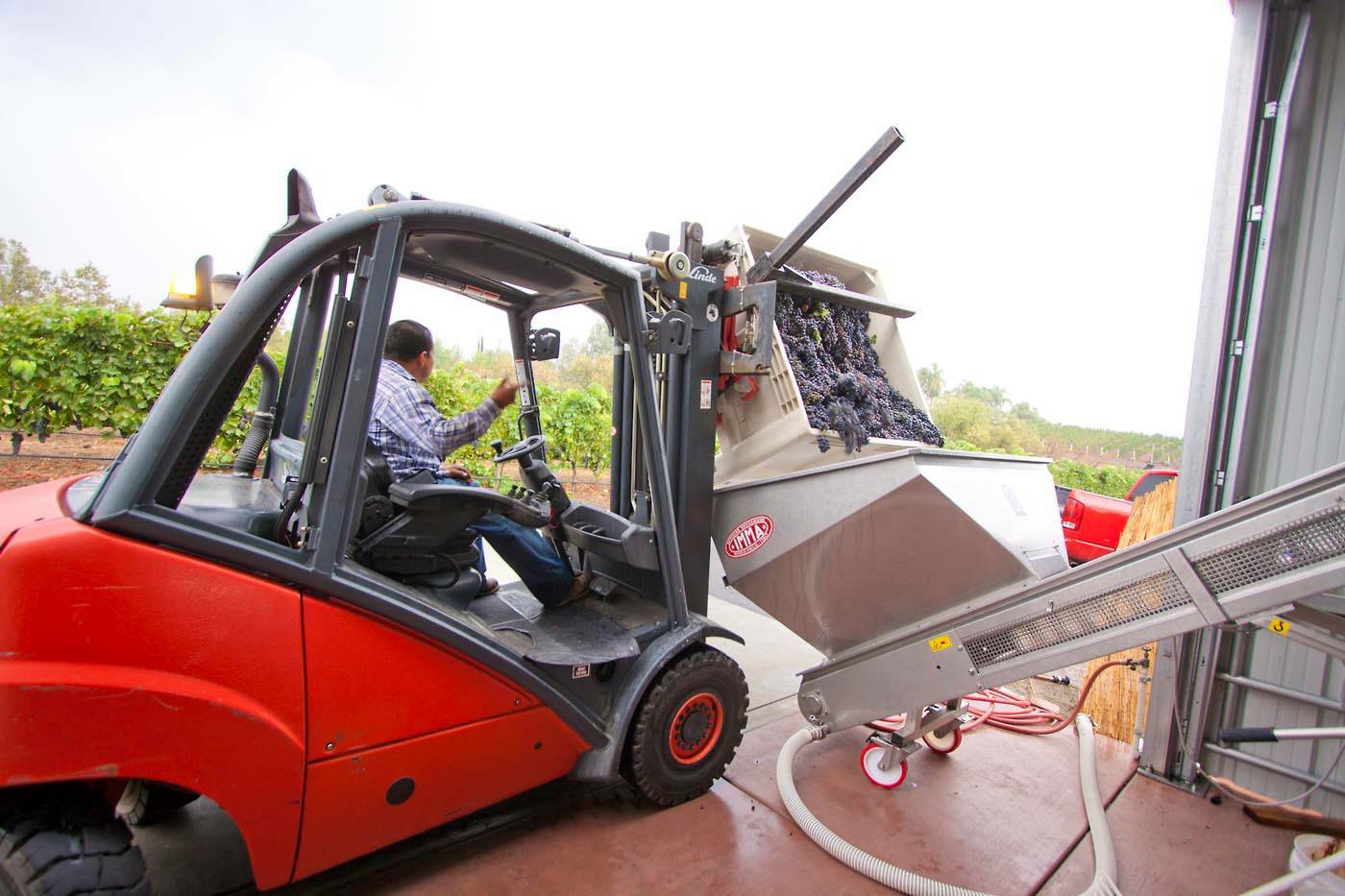To maximize throughput in a typical warehouse with pallet storage use these simple best practices. By using these guidelines, you will maximize storage space and throughput, while minimizing product and pallet rack damage.
Best Practices – Material Storage
Front View – the pallet rack design should provide enough room (side-to-side) to allow a minimum of 5 inches of space between the maximum load width and the inside of the uprights with a minimum of 6 inches of space between each load. This allows for safe load placement and minimizes load/pallet rack damage.

Side View – the pallet rack design should provide for uniformly distributed load placement within the rack to allow either:
- 3 inches of overhang (front and back) within each beam level, or
- Loads placed flush to the rack face
By allowing for 3 inches of overhang or placing loads flush to the rack face, you have what is called a Clear Aisle. A Clear Aisle is defined as the available space between either the loads or the racking (i.e. Load to Load, or Rack to Rack).

The rack design should also provide a Row Space (also known as flue space) between back-to-back rows. This Row Space can vary from 6 inches to 12 inches and provides a safe distance for load placement in back-to-back rows.
Lift Truck Types
Counterbalanced Lift Trucks
When thinking of the best truck to use in your warehouse environment, consider a counterbalance lift truck. A counterbalanced lift truck is a conventional-style lift truck, either 3-wheel or 4-wheel, equipped with a counterweight to offset carrying a load. Capacities range from 3,500 lbs to over 40,000 lbs and can be battery, liquid propane or diesel-powered.
Required aisle spacing for warehouse use is typically 12 feet to 14 feet (with a 48-inch load length). Counterbalance trucks are quite versatile and can be used in a variety of applications such as warehousing, loading docks and general-purpose environments.


Narrow Aisle Lift Trucks
Reach Trucks and Order Pickers are designed for full pallet putaway/retrieval or order picking in warehouse applications. These trucks are typically 3,000 lb to 4,500 lb capacity and are battery-powered.
Reach Trucks, designed for full pallet storage can operate in a 9 ft to 10ft aisle.
Order Pickers, designed for partial pallet order picking and case picking allow the operator to be raised to the level of the load in what is also called a man-up lift truck for ease of order picking. This eliminates the need to replenish low-level picking locations.


Very Narrow Aisle Lift Trucks (VNA)
Turret Trucks are designed for full pallet putaway/retrieval or order picking in warehouse applications. These trucks are typically 3,000 lb to 3,300 lb capacity and are battery-powered.
Turret Trucks can operate in a 5‘6“ to 7‘6“ aisle, and require aisle guidance for safe operation. Aisle guidance can either be wire (a wire is installed in the floor) or rail (rail guides are installed at the base of the pallet racking). Additionally, Turret Trucks can either be man-up (also allows for order picking) or man-down (full pallet only).



Typical Wire Guidance Layout
Pallet Trucks
Pallet Trucks are designed to transfer materials across distances greater than 150 feet either within the warehouse/production area, or loading/unloading trucks. Capacities range from 2,600 lbs to 8,000 lbs.
When operating a Pallet Truck, you can choose between the walk-behind and ride-on styles (end or center controlled). Both options can be either manual or battery powered. Pallet Trucks can also be used for low-level order picking in addition to transporting pallets.


Walkie Stackers
Stackers are designed to place pallets in pallet racking or operate in work-cell/production areas (as mobile work tables). These trucks are electric and range in capacities from 2,000 lbs to 4,000 lbs Stackers will either have outriggers for stability or can also be counterbalanced in design. Additionally, Stackers can be equipped with a reach mechanism or side-shifter.


Best Practices – Lift Truck Operation – Warehouse Aisle
Regarding best practices for operating a lift truck in a warehouse aisle, the pallet rack layout should provide enough room for the lift truck to safely operate in a clear aisle, and provide enough running clearance to maximize efficiency. The running clearance (as determined by the manufacturer and lift height) ranges from 4 feet to 8 inches.
In Very Narrow Applications, VNA Turret Trucks require aisle guidance to allow for proper load retrieval/put-away and safe operation. If the layout is designed properly, product and rack damage is virtually eliminated while increasing product throughput.
Summary
Each application presents unique characteristics that need to be addressed when designing a lift truck/storage layout. Evidence of damaged product or pallet racking is generally caused by either misapplied lift trucks, operator misuse, or a combination of both. It‘s good to review material handling best practices from time to time and incorporate them into your own safety policies and procedures.
This summary provides a very generic approach to best practices and is not application-specific. For a deeper analysis of a specific application, please contact your local KION North America authorized dealer.


